Nexus 7 (2013) - Mini Review
by Brian Klug on July 27, 2013 12:54 AM EST- Posted in
- Tablets
- Snapdragon
- Qualcomm
- Android
- Mobile
- APQ8064
- Nexus 7
- Android 4.3
Last year the Nexus 7 debuted with a Tegra 3 SoC, which for reminder consisted of a 4+1 architecture of ARM Cortex A9 CPUs, with the 4 A9s built on 40nm G, and the +1 “shadow core” A9 built on 40nm LP (TSMC’s 40 LPG process), accompanied by ULP GeForce GPU with 12 cores running at a max GPU clock of 416 MHz. The exact SoC was NVIDIA’s Tegra 3 T30L, which could run one A9 at up to 1.3 GHz and all A9s at up to 1.2 GHz.
Rather than the relatively logical upgrade path of going to NVIDIA’s Tegra 4 SoC (I’ve heard all manner of speculation about what happened there), the new Nexus 7 switches to Qualcomm’s APQ8064–1AA, a version with 4 Krait 300 CPU cores (yes, Krait 300, not 200) running at up to 1.5 GHz and Adreno 320 graphics. Rather than use a PoP and LPDDR2, this specific APQ8064 variant goes to PCDDR3L–1600 MHz instead, including 4, 4Gb discrete 1.35V SK-hynix DRAM devices off to the side (more on the opposite side of the PCB) adding up to 2 GB of RAM. Qualcomm's Snapdragon S4 Pro and Snapdragon 600 branding gets confused here, although Qualcomm is calling the APQ8064 inside the Nexus 7 (2013) S4 Pro, it's more like an underclocked or lower binned Snapdragon 600.
At this point APQ8064 is probably the most well understood SoC in recent memory (so much so that I’m pining for devices to include something different just from an academic perspective) so I’ll spare the very verbal discussion about its performance.
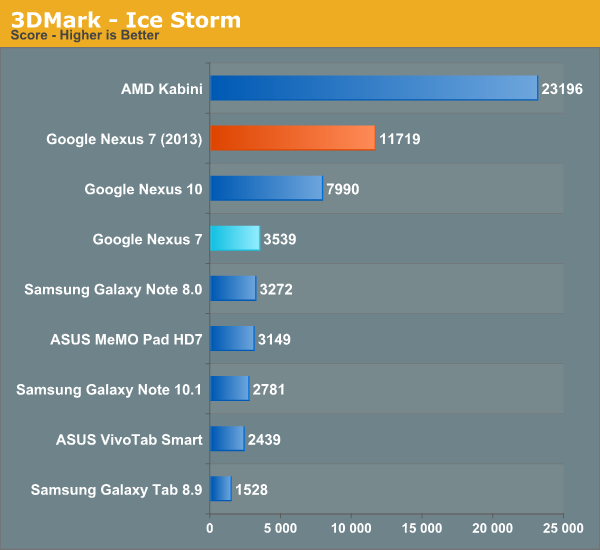



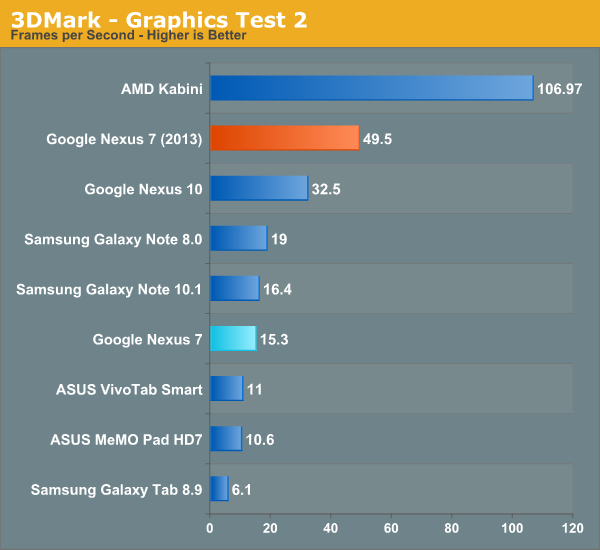
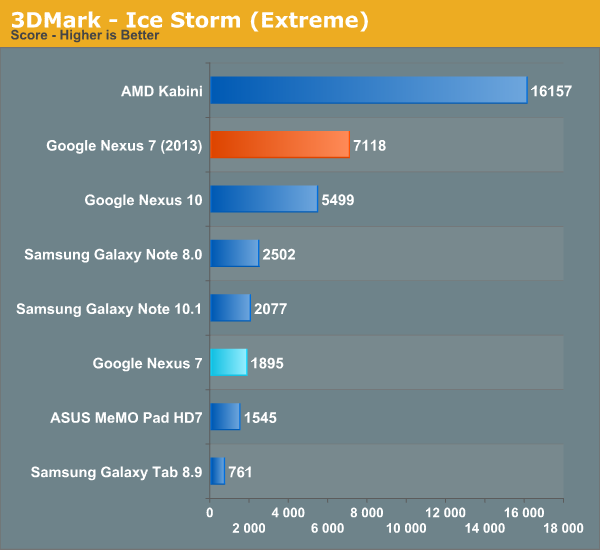

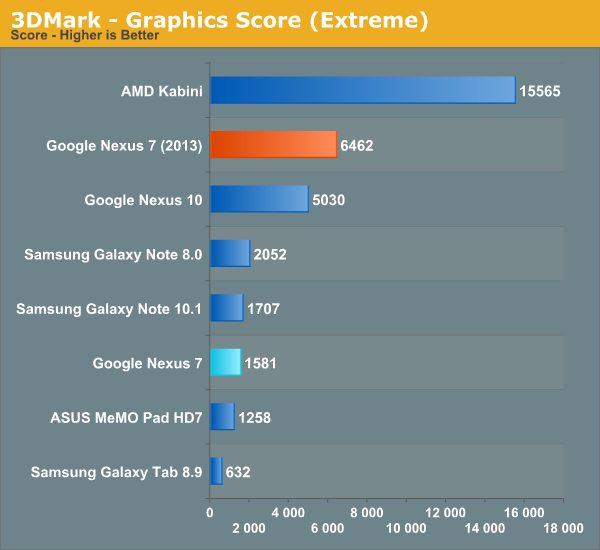

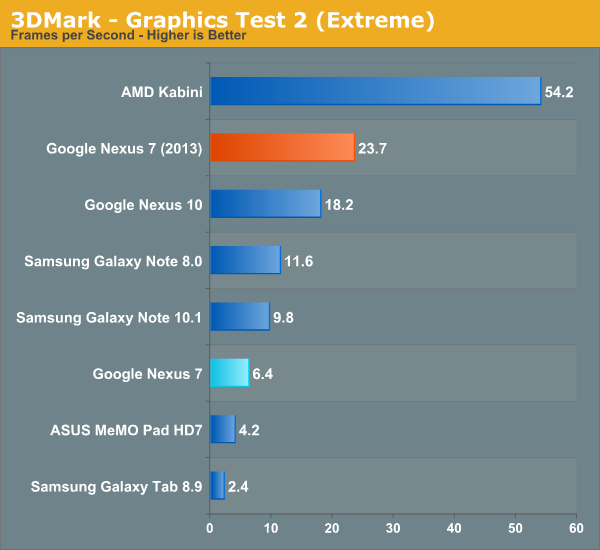


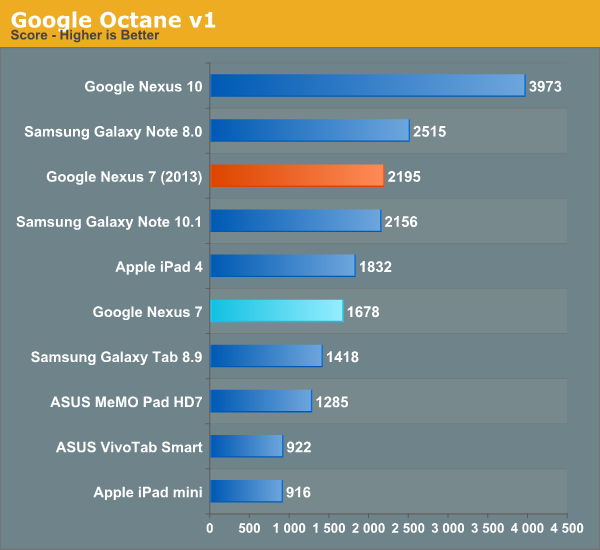
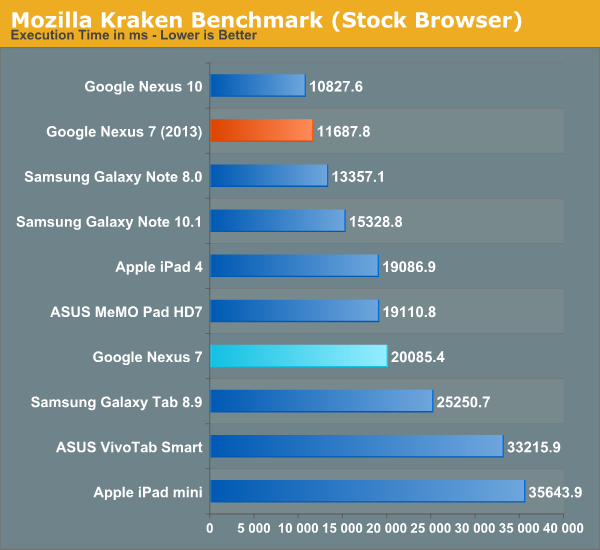
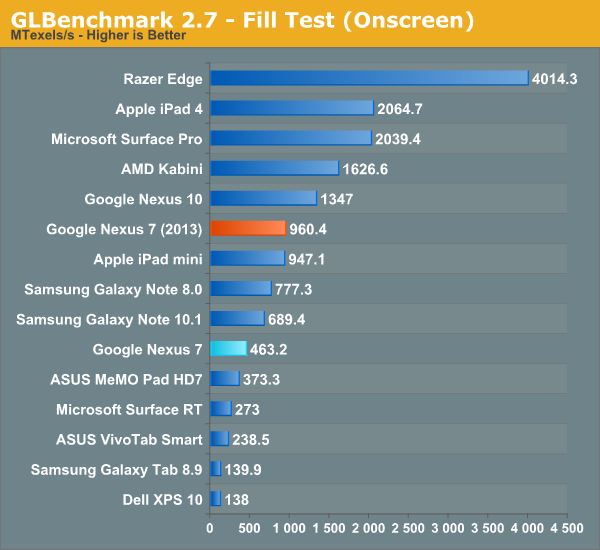
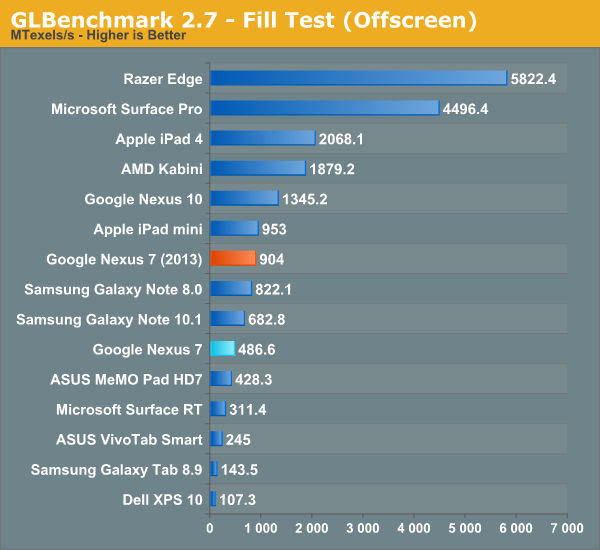
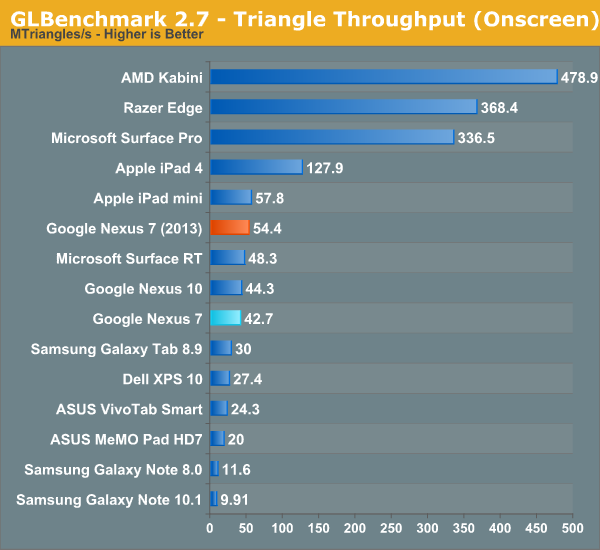
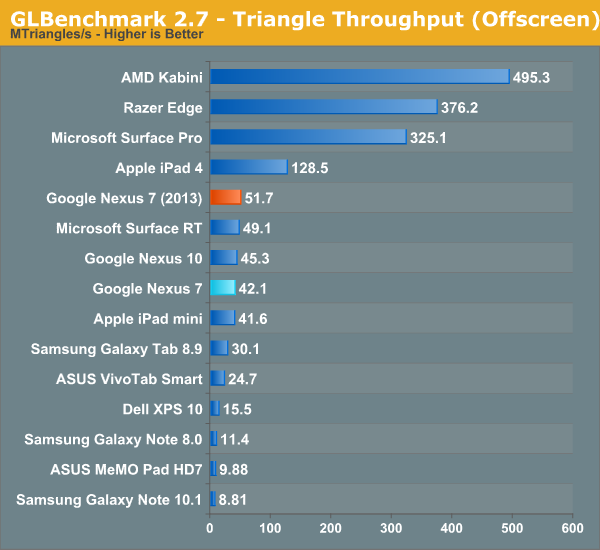
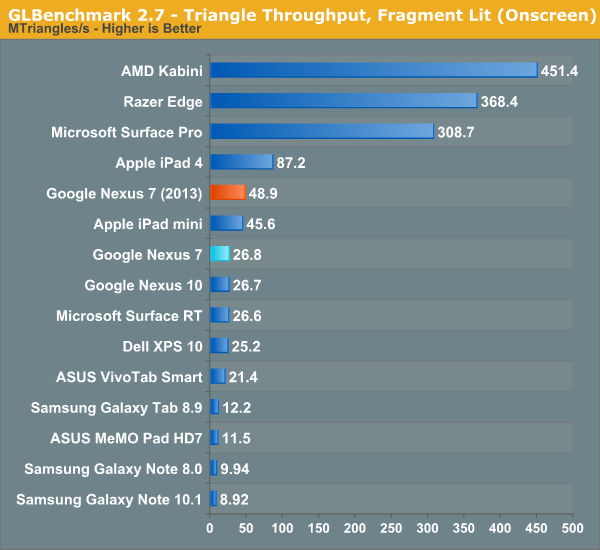
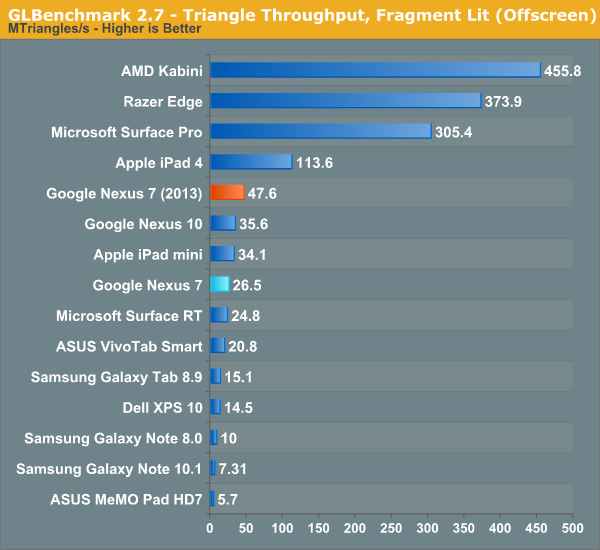
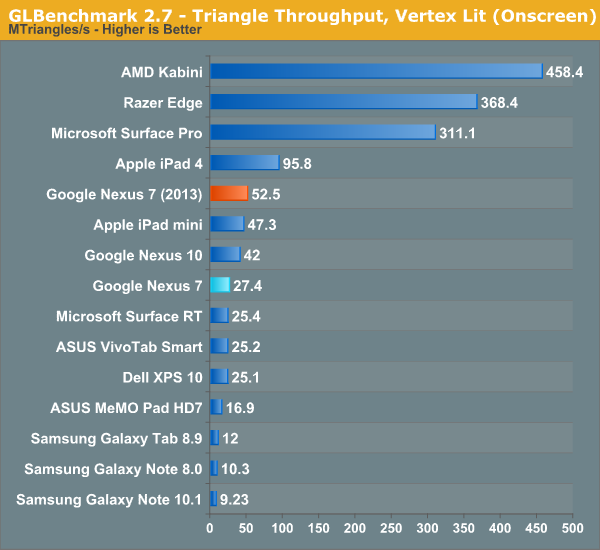
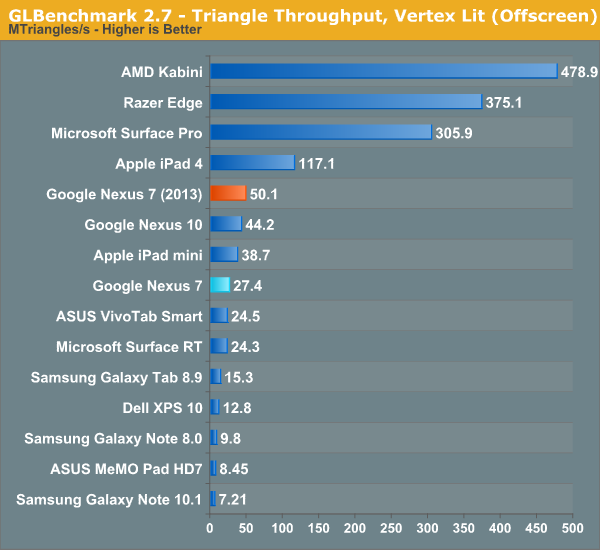

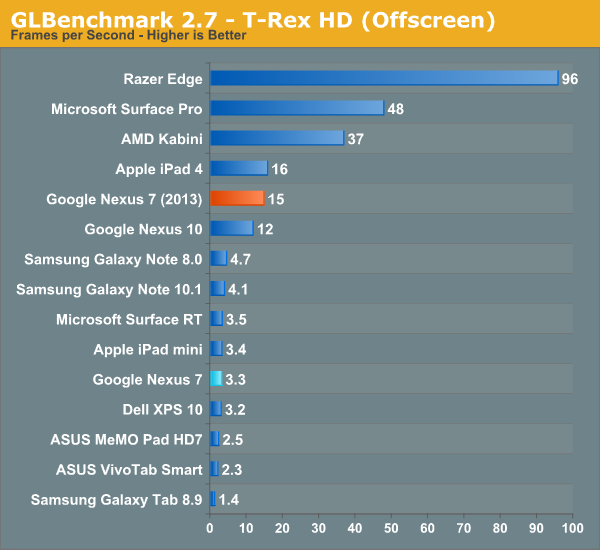
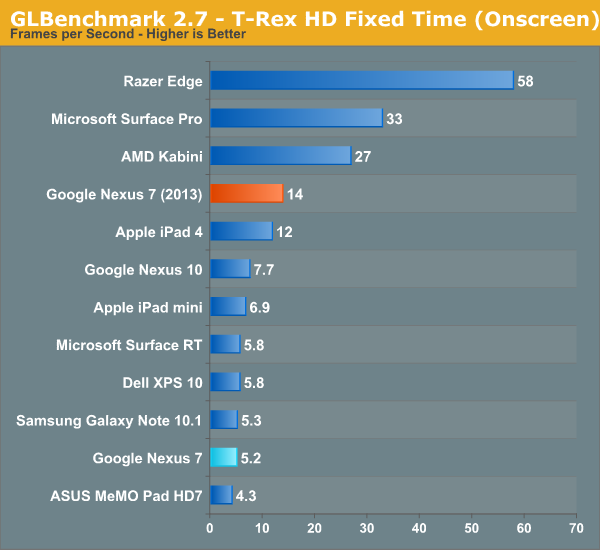
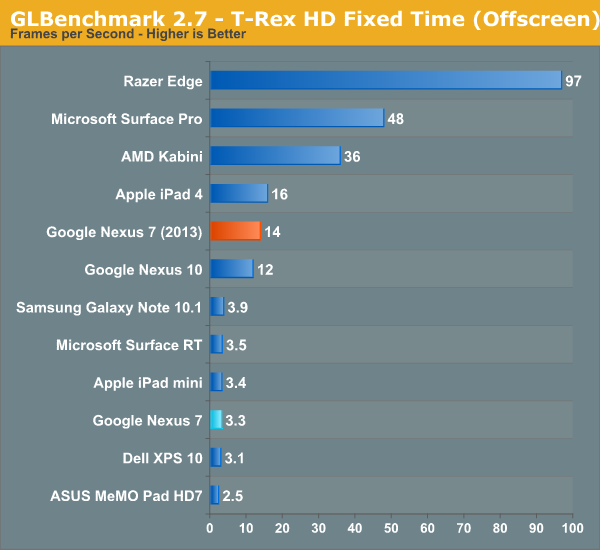
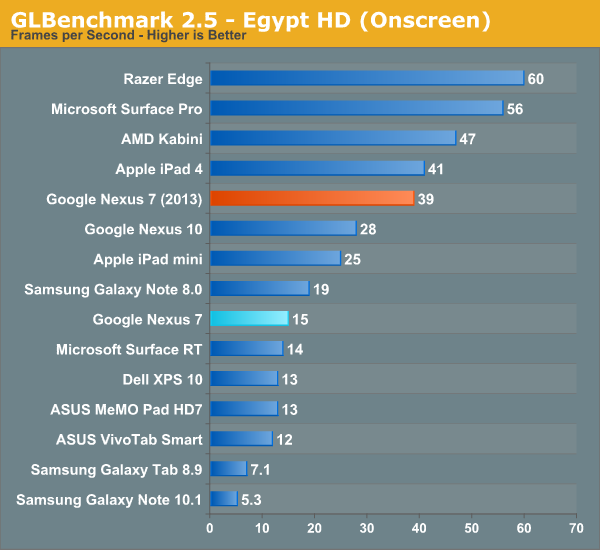
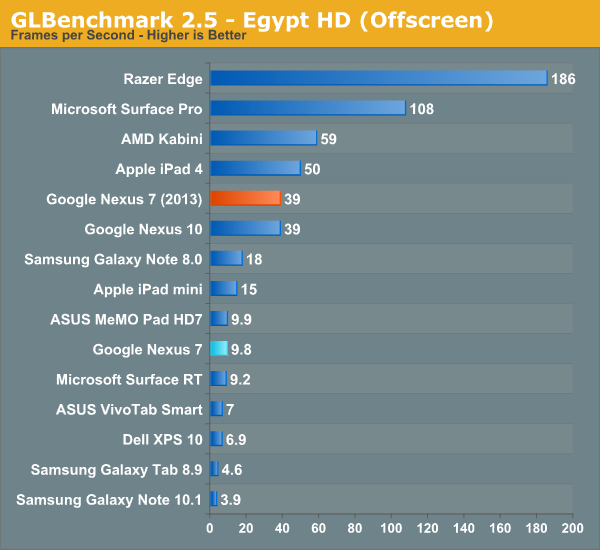
Suffice it to say, moving from 1.2–1.3 GHz Tegra 3 to 1.5 GHz APQ8064 represents a big jump forwards in performance. Google claimed 1.8x improvement on CPU performance, and 4x improvement on GPU, which gets validated pretty much consistently through the benchmarks. I never felt like Tegra 3 was a slouch by any means (performance was more I/O bound on the OG Nexus 7, which we’ll talk about in a moment), but the new Nexus 7 has ample performance for the considerable increase in screen resolution.
Dat eMMC
It wasn’t any secret with the original Nexus 7 that much of the real world performance was gated by storage I/O throughput – we wrote about it after all – and storage performance was a common complaint while multitasking on a few other previous and similar era ASUS tablets. Most of the time performance was acceptable, and for $200 you can’t complain too much about things, the issue was that further on in the life of the tablet performance began degrading somewhat notably, leading to complaints.
Obviously the first thing I did on the Nexus 7 (2013) was run Androbench with the same 100 MB settings to test and see what out of box I/O performance looks like. Things are much better with the new Nexus 7 than they were with the previous one, so at a high level all is good.
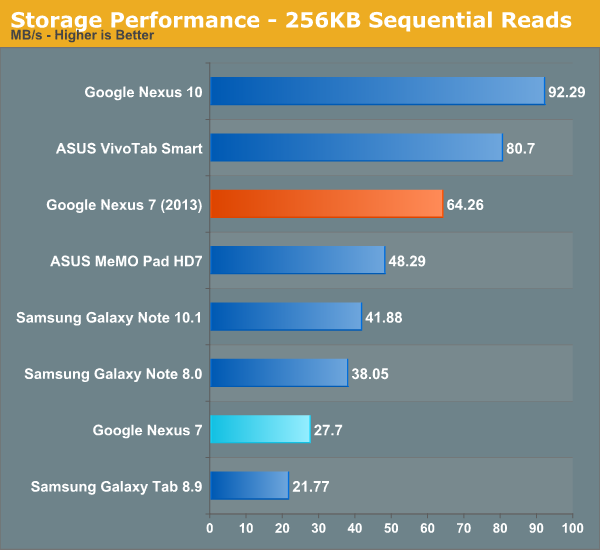
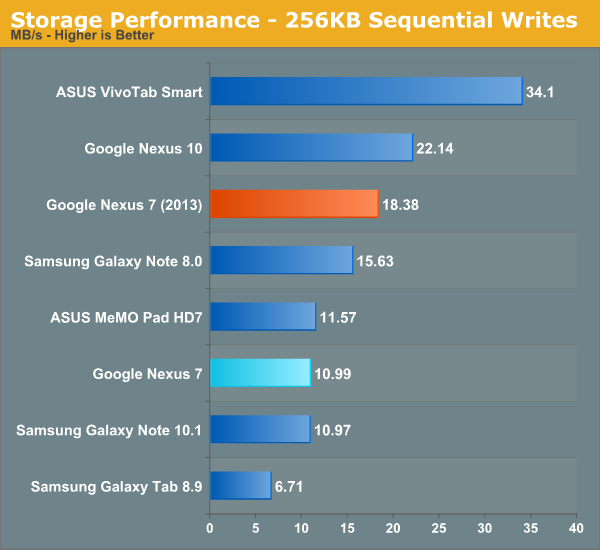
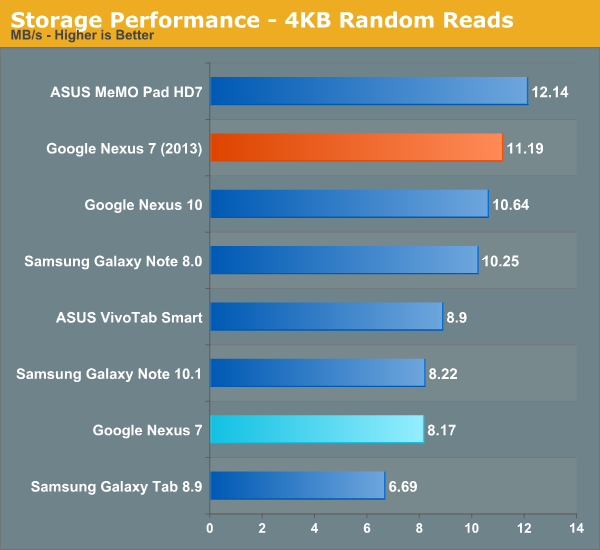

The story actually is a bit more involved however. One of the big problems was that the slowness which occurred with the prior Nexus 7 took device aging to appear – it was great for the first few months, but after you started loading it things tailed off. The new Nexus 7 (2013) with Android 4.3 includes support for fstrim, essentially idle garbage collection, which TRIMs the eMMC when a few conditions are met – the device is idle, screen off, and battery above roughly 70-percent. I’m told that TRIM support has been part of the eMMC standard since around version 4.2, it was just a matter of enabling it in software. The result is that the new Nexus 7 shouldn’t have these aging affects at all. Better yet, fstrim support has also been added to the old Nexus 7 with as of the Android 4.3 update, so if you’ve got a Nexus 7 that feels slow, I/O performance should get better after fstrim runs in the background. I'm checking on whether the other Nexus devices have also had TRIM support added. I would consider the slow storage aging problem fixed as of now, and Google took the eMMC and storage I/O performance issues with the previous Nexus 7 to heart for this version.


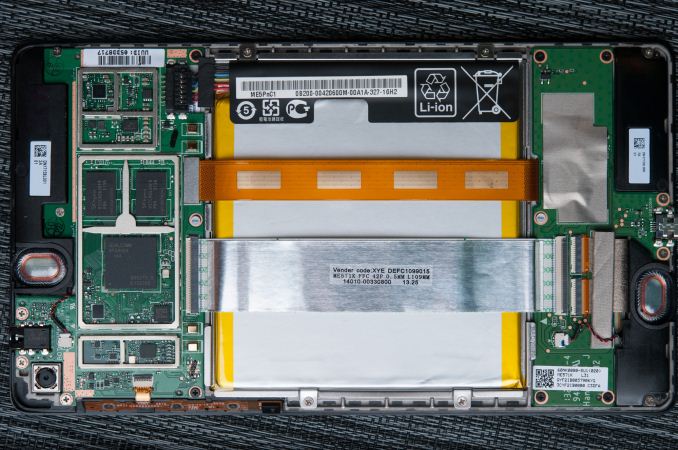
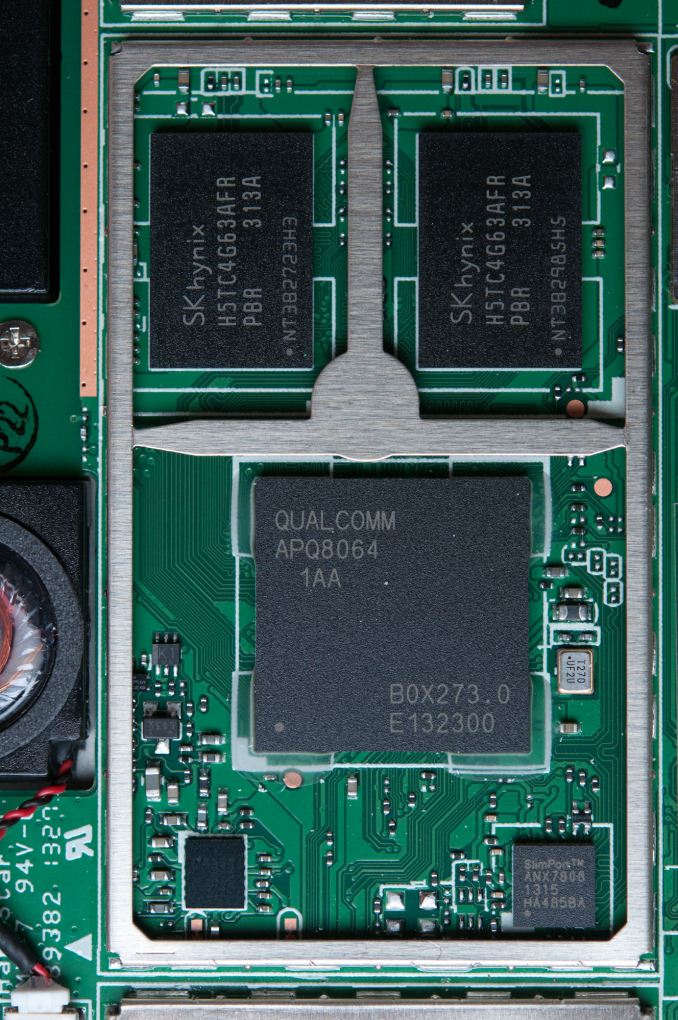














252 Comments
View All Comments
TheinsanegamerN - Saturday, July 27, 2013 - link
I would say that no removable memory is a concern, except that my 32 GB nexus 7 has been in heavy use for a year now, and ive only used 5 GB....and there are several apps that i dont use anymore. i dont think many people use more than 32 gb of storage.kmmatney - Saturday, July 27, 2013 - link
Agreed - the only time I ever have to free up space on my 16GB iPad is when the kids fill it with movies (somehow they prefer to use the iPad for movies, rather than using a phone or digital cameras).superflex - Monday, July 29, 2013 - link
Removable memory or storage?Big difference, Copernicus.
broberts - Tuesday, July 30, 2013 - link
Given that the device supports USB-OTG, adding an SD slot seems rather pointless. For the rare users that absolutely must have more than 32GB on-line, use a flash drive. Better yet, use the cloud or other storage on your LAN.lightsout565 - Saturday, July 27, 2013 - link
The amount of value the Nexus 7 represents in comparison to other Android tablets is extraordinary. I'm not sure Google would want to increase the cost of the tablet for something that wont positively increase the user's experience for 90% of people.nerd1 - Saturday, July 27, 2013 - link
They are INTENTIONALLY omitting a few features from their nexus devices so that OEM can still sell android stuff. Harm environment? LOL... Go blame apple who makes EVERY appliances non-repairable and non-upgradable, or disposable, to maximize profit.Broo2 - Saturday, July 27, 2013 - link
At the rate technology is changing, a 2 or 3 year old tablet will be obsolete as many mobile technologies are just starting to hit their stride;Have you tried to run some of the newer apps/games on an original Galaxy Tab? Apple even recognizes this as there will be no iOS 7 for the original iPad (released in 2010).I think it is more that Google is recognized the potential usable lifespan of their product (2-3 years) and decided to keep the design simple.
I found storage is an over-rated artificial need I clung to from the last decade; I went for a 64GB SDXC in my old Galaxy S3 and used perhpas 30% of it; I was streaming more music (Spotify/Google) and podcasts (DogCatcher) and only using the storage for audiobooks and some FLAC music- and Plex took care of all my video streaming needs. :)
Myrandex - Monday, July 29, 2013 - link
lol Apple isn't allowing iOS7? They didn't even allow iOS6. It was complete crap. They allowed iOS6 on an iPhone model that was older than the original iPad (the 3GS), but not on the iPad itself. My wife has an original iPad and it is stuck at its current iOS5 revision.broberts - Tuesday, July 30, 2013 - link
Most tablets in the price range and even many more expensive units (e.g. iPads) have no user replaceable parts. So it appears that your criteria eliminates most, if not all tables.There is a direct trade off between user replaceable/expandable parts and cost. Moreover, the cost of a battery plus additional RAM bought in single units is such that it is generally not much more expensive to buy and entirely new, mass produced unit. This is generally true, not only with tablets but with other technology, including automobiles.
The USB interface reportedly supports OTG so it is not inconceivable that one will be able to plug in externally powered SSD and hard drives as well as flash drives. And of course one can use any one of a number of Android apps that provide a connection to storage in your LAN or the cloud. So the lack of an SD slot is moot.
Battery life is not dependent on the number of charge cycles. Useful life is affected by the temperature at which they are stored and the pattern of use. I expect your 2 year usable life time is pessimistic except for the heaviest of users.
Kidster3001 - Friday, August 9, 2013 - link
Memory is not removable on any mobile device. I think you meant to say Storage. They are quite different. RAM (memory) vs HDD/SSD (Storage) is a good analogy to keep in mind.